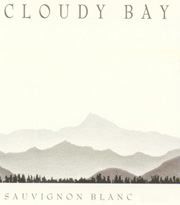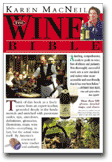No
More Wine and Poses!
How About a Simile Cease-Fire?
by Bryan Miller
Wine
criticism can be exhausting. While food writers have the luxury of
hundreds of vegetables, meats and fish to describe, not to mention
thousands of preparations, wine writers have, well, a bottle. The
bottle is filled with stuff, sometimes red, sometimes white, and sometimes
pink. And honestly, within those color schemes—at least to the
average Saturday-night tippler-90 percent of them taste more or less
the same. Accordingly, this discipline has always shown a tendency
toward the florid and opaque.
Yet in the past few years—and I can't explain why—winespeak
has reached a dazzling state of hyper-fermentation, releasing a gaseous
haze of verbiage that can be seen from Sonoma to Saint-Julien. I find
myself reading less and less wine writing these days because so much
of it seems irrelevant to me. Like most people, I want cogent recommendations
about wine so I can go out and buy some. Recently, I scanned more
than a dozen wine publications (and newspaper columns), big and small.
No doubt, it can be grim for casual wine drinkers looking for advice.
 |
|
In
their own words: ripe passionfruit, yellow plums, juicy limes
and freshly picked basil
|
The
twisted Vine Journalism Award goes to the weekly wine column in
The Wall Street Journal. The paper's professional imbibers,
Dorothy J. Gaiter and John Brecher, take a decidedly populist approach
to wine writing, frequently sprinkling their evaluations with effusions
like "Yummy!" and "Holy cow!" But it is their
simile-tortured lexicon that has me—and many professionals
of my acquaintance in the wine business—occasionally flabbergasted.
For example, some time back they characterized a Faiveley 2000 Montagny
(Les Jones), from Burgundy, as (I am not making this up) "Rich
fruit. Some oak. Nutmeg. Crème brûlée! Toast,
carambola, caramel, pineapple, lychee… a fruit bowl inside
a soulful wine with weight. Egg custard. Flan." One wine, with
more components than the Mars Rover!
I
quickly glanced at the front page to confirm that it wasn't April
1. I don't know about the Gaiter/Brecher team's dining etiquette,
but when I am served an artery-clogging crème brûlée,
I do not lift it to my nose and sniff. Same with egg custard and
flan (which, by the way, is the same thing, except the latter is
coated in caramel).
If
this kind of loopy wine prose is getting by the exacting editors
at The Wall Street Journal—they also missed "peaches
and cream," "dew," and "almond cheese pastry"—what
is the competition up to? Twice I attempted to reach the columnists,
but they did not respond.
Wine
Spectator, which is considered the Bible of the tannin set,
assigns helpful and reliable ratings that are usually accompanied
by short commentaries. Over the past few years, the text has become
increasingly turgid and inside-baseball, almost comically so.
Imagine
walking into a neighborhood wine shop carrying a copy of Wine
Spectator and saying to the owner: "I'm looking for a medium-priced
red, something full-flavored, along the lines of roasted quail and
match sticks; if you don't have that, can you recommend one reminiscent
of underbrush after rain?"
Ironically,
virtually every working wine professional I know—including
the people who make the stuff—deride this kind of thing.
In
December, I traveled to Spain in order to sample several dozen white
wines of Galicia. While there, I had the opportunity to speak with
a dozen winemakers about their professional vocabulary. I was amazed
at how few words they employ—fruity, tannic, crisp, flowery,
earthy. I didn't trip over a metaphor the whole week. (They had
a good laugh over that "crème brûlée,"
all right). The French and Italians are no different. So what's
going on around here?
I
called Bruce Sanderson, the thoughtful and respected tasting director
at Wine Spectator, to find out what brioche and roasted quail
have to do with evaluating wine. The quail, he was quick to point
out, wasn't his idea, although he averred that brioche, in some
cases, can be a legitimate term because, "when you break it
down to its common denominators, you have toast." I decided
to ponder that for a while.
Some
of the esoteric adjectives, Mr. Sanderson added, arise from the
magazine's tasting methodology, in which staffers specialize in
different regions and countries—a Tuscan expert, a Portugal
expert.
"Every
taster develops his own vocabulary over time," he pointed out.
"They may taste 30 wines from one region a day, and they have
to make fine distinctions."
I
decided not to press him about a wine the magazine recommends for,
among other things, its "ham hocks" quality.
 Like
a youngster picking up foul language from his parents, smaller wine
journals, like Wine Enthusiast, have adopted some of the
winespeak, most notably "crème brûlée,"
"stud" and many varieties of desert shrubbery. It was
a tough read, those recent issues, what with all the "pulsating
acids," "powdered quartz" and "apricot marmalade"
(as opposed to just plain apricots?). Like
a youngster picking up foul language from his parents, smaller wine
journals, like Wine Enthusiast, have adopted some of the
winespeak, most notably "crème brûlée,"
"stud" and many varieties of desert shrubbery. It was
a tough read, those recent issues, what with all the "pulsating
acids," "powdered quartz" and "apricot marmalade"
(as opposed to just plain apricots?).
In
many cases, no matter how woolly the wood, I can make an educated
guess about the kind of taste it's referring to. The other day,
though, I was slack-jawed upon reading about a 2001 Heytesbury (California)
Chardonnay which benefited, in the taster's opinion, from being
"not mallowy," a term that refers to "a family of
herbs with palmately lobed or dissected leaves." Damn, I gave
away my last palmately lobed bottle as a dinner party gift!
To
be sure, not all wine columns are so recondite. Robert Parker—the feared Alan Greenspan figure of the decanting
set—is, for the most part, a straight shooter. As are Hugh
Johnson, Jancis Robinson (the two collaborators on the excellent
World Atlas of Wine) and Karen MacNeil (The
Wine Bible), to name a few.
This is not to say that wine writers should limit their terminology
to "fruity" and "crisp" and "grassy."
Rory Callahan, a wine educator who now has a consulting company
in New York called Wine and Food Associates, estimates that there
are roughly 80 terms that are recognized by wine schools like the
University of California at Davis. Many, however, are scientific
terms generally used by biologists.
As
Mr. Callahan noted, the English language has more than enough everyday
adjectives and similes to communicate wine characteristics: crisp,
flowery, tannic, fruity, dense, pale, lush and so on. And wine can
be reminiscent of various fruits, like cherry, blackberry, apple
or pear. If you drink, for example, a Cloudy Bay Sauvignon Blanc
from New Zealand, it gives off a lot of acid and the unmistakable
flavor of grapefruit; sniff a 20-year old Pommard and your nose
will feel as if it has been pushed into a cigar box.
If
there is one wine professional who gets the joke—and, in fact,
has made a lot of money parodying the wine lingo—it's Joshua
Wesson, a renowned wine lecturer and co-owner of a chain of hip
wine shops called Best Cellars (there is one in New York), where
virtually all bottles are $15 or less.
"There
is nothing bad about describing a wine as reminiscent of carambola
and chocolate mousse and northern New Jersey," says Mr. Wesson.
"But it is of little help to the guy who has never been to
northern New Jersey. You need wit; you need some tongue-in-cheek.
When you get serious, you lose it."
We
concur. And, of course, we
describe our wines in a sexy manner like this.
|
